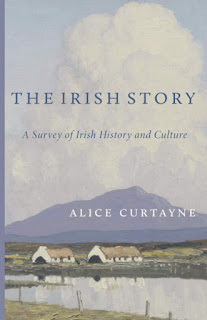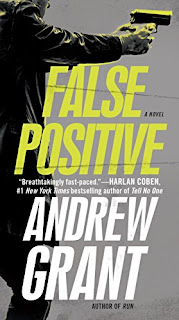Top Ten Fiction and Non-Fiction Books Second Quarter 2022
It has been a very good first half of the year. Many great reads. I have read just over a book and a half a day. I read 110 books this quarter and 258 so far this year. Part of it is due to my youngest two children’s reading skills really growing and they read to/with me for 20 minutes four or five days a week. As well as this Lent I tried to read a different Stations of the Cross booklet each day. And have continued each Friday since Lent. In the spring of 2016, I worked through Brandon Vogt’s course Read More Books Now (now available on ClaitasU). The year before that I removed all games from my phone and tablet and my reading had doubled.
But back to this quarter. By the numbers:
Books Read: 110
First Time Reads: 86
Fiction: 31
Non-Fiction: 55
5/5 Stars: 74
Here is my top ten fiction and non-fiction books of the second quarter of 2022.
Top Ten Non-Fiction Books:
3. Books by Benedict XVI
6. Books by Deacon Nick Donnelly
Bonus Books:
Books by J.B. Midgley
Top Ten Fiction Books:
1. Short Stories by Karina Fabian
2. unSPARKed Books by Corinna Turner
3. St. Tommy NYPD Books by Declan Finn
5. Paul McGrath Books by Andrew Grant
8. Detective Cooper Devereaux Books by Andrew Grant
Bonus Books:
The first half of 2022 has been a great, and this was another excellent quarter for reading. A few new authors, some favorites. Books in old series, and the beginnings of some new series. Again this year, at least so far, I managed to write reviews for all books read for the only the third time.
Note: I do not include books that have been read in previous years and were reread this year in my top ten lists, they are sometimes in the bonus section. But if you want more options check out my favorite books year by year list.
Relates Posts:
Top 10 Fiction Books 1st Quarter 2010
Top 10 Fiction Books 2nd Quarter 2010
Top 10 Reading Goals for 2010
Top 10 Fiction Books 3rd Quarter 2010
Top 10 Fiction Books 4th Quarter 2010
Top Ten Reading Goals For 2010 - Recap
Top 10 Fiction Books 2010
Top 10 Picture Books of 2010
Top 10 Non-Fiction Books of 2010
Top 10 Graphic Novels for 2010
Top Ten Reading Goals For 2011
Top Ten Fiction Books 1st Quarter 2011
Top Ten Fiction Books 2nd Quarter 2011
Top Ten Reading Goals for 2011 Update
Top Ten Fiction Books 3rd Quarter 2011
Top Ten Fictions Books 4th Quarter 2011
Top Ten Fiction Books 2011
Top Ten Reading Goals 2011 - Recap
Top Ten Reading Goals 2012
Top Ten Fiction Books 1st Quarter 2012
Top Ten Fiction Books 2nd Quarter 2012
Top Ten Fiction Books 3rd Quarter 2012
Top Ten Fiction Books 4th Quarter 2012
Top Ten Fiction Books 2012
Top Ten Non-Fiction Books 2012
Top Ten Reading Goals 2012 - Recap
Top Ten Reading Goals 2013
Top 10 Fiction Books 1st Quarter 2013
Top 10 Fiction Books 2nd Quarter 2013
Top 10 Books Second Half 2013
Top Ten Fiction Books 2013
Top Ten Non-Fiction Books 2013
Top Ten Books First Quarter 2014
Top Ten Books Second Quarter 2014
Top Ten Books Third Quarter 2014
Top Ten Books Fourth Quarter 2014
Top Ten Fiction Books 2014
Top Ten Non-Fiction Books 2014
Top Ten Books First Quarter 2015
Top Ten Books Second Quarter 2015
Top Ten Books Third Quarter 2015
Top Ten Books Fourth Quarter 2015
Top Ten Fiction Books 2015
Top Ten Non-Fiction Books 2015
Top Ten Books First Quarter 2016
Top Ten Books Second Quarter 2016
Top Ten Books Third Quarter 2016
Top Ten Books Fourth Quarter 2016
Top Ten Non- Fiction Books 2016
Top Ten Fiction Books 2016
Top Ten Catholic Books
Top Ten Books First Quarter 2017
Top Ten Books Second Quarter 2017
Top Ten Books Third Quarter 2017
Top Ten Books Fourth Quarter 2017
Top Ten Non-Fiction Books 2017
Top Ten Fiction Books 2017
Top Ten Books First Quarter 2018
Top Ten Books Second Quarter 2018
Top Ten Books Third Quarter 2018
Top Ten Books Fourth Quarter 2018
Top Ten Non-Fiction Books 2018
Top Ten Fiction Books 2018
Top Ten Books First Quarter 2019
Top Ten Books Second Quarter 2019
Top Ten Books Third Quarter 2019
Top Ten Books Fourth Quarter 2019
Top Ten Non-Fiction Books 2019
Top Ten Fiction Books 2019
Top Ten Books First Quarter 2020
Top Ten Books Second Quarter 2020
Top Ten Books Third Quarter 2020
Top Ten Books Fourth Quarter 2020
All Top Ten Lists on Book Reviews and More
Statistics Books Read By Year:
258 - January-June 2022
Top Ten Books Fourth Quarter 2020
Top Ten Books Second Quarter 2022
...
All Top Ten Lists on Book Reviews and More
Statistics Books Read By Year:
258 - January-June 2022
365 - 2021
317 - 2020
392 - 2019
359 - 2018
380 - 2017
272 - 2016
177 - 2015
130 - 2014
88 - 2013
176 - 2012
163 - 2011
302 - 2010
142 - 2009
98 - 2008
83 - 2007
191 - 2006
151 - 2005
60 - 2004
52 - 2003
97 - 2002
50 - 2001
41 - 2000
71 - 1999
73 - 1998
131 - 1997
101 - 1996
392 - 2019
359 - 2018
380 - 2017
272 - 2016
177 - 2015
130 - 2014
88 - 2013
176 - 2012
163 - 2011
302 - 2010
142 - 2009
98 - 2008
83 - 2007
191 - 2006
151 - 2005
60 - 2004
52 - 2003
97 - 2002
50 - 2001
41 - 2000
71 - 1999
73 - 1998
131 - 1997
101 - 1996























